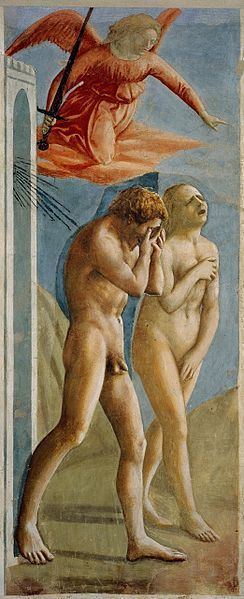Period Early renaissance | Created 1425 Genre Christian art | |
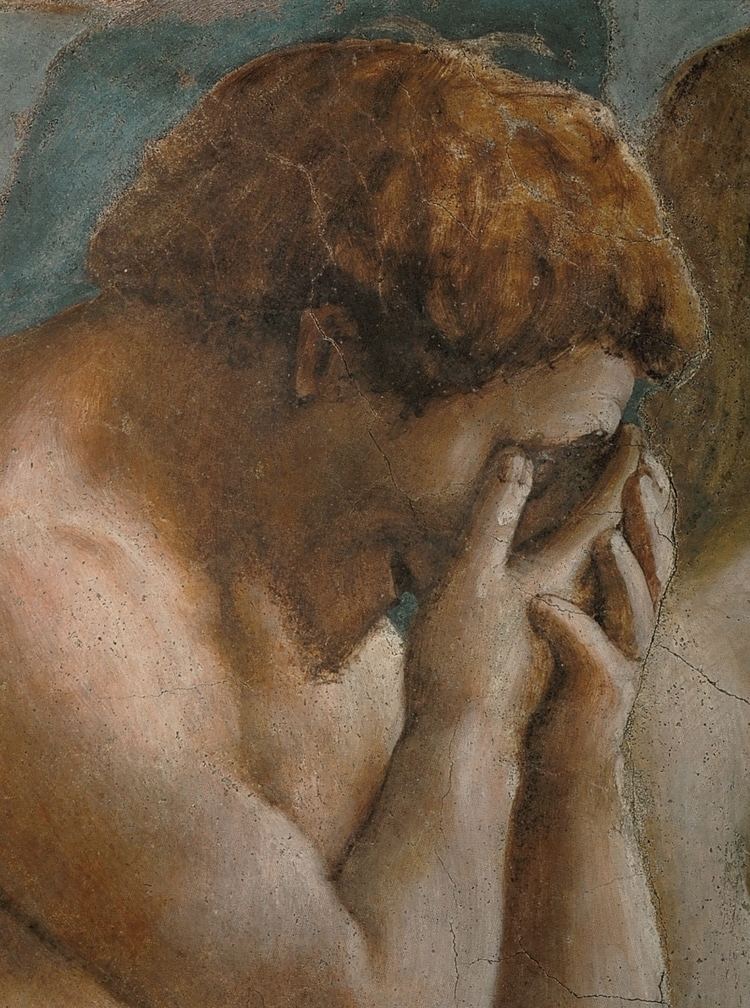 | ||
Similar Masaccio artwork, Fresco, Christian art | ||
Cole expulsion from the garden of eden
The Expulsion from the Garden of Eden (Italian: Cacciata dei progenitori dall'Eden) is a fresco by the Italian Early Renaissance artist Masaccio. The fresco is a single scene from the cycle painted around 1425 by Masaccio, Masolino and others on the walls of the Brancacci Chapel in the church of Santa Maria del Carmine in Florence. It depicts the expulsion of Adam and Eve from the garden of Eden, from the biblical Book of Genesis chapter 3, albeit with a few differences from the canonical account.
Contents
- Cole expulsion from the garden of eden
- Cover up and restoration
- Influence of Michelangelo
- Differences from Genesis
- References

Cover up and restoration
_-_WGA14180.jpg/210px-Masaccio_-_The_Expulsion_from_the_Garden_of_Eden_(detail)_-_WGA14180.jpg)
Three centuries after the fresco was painted, Cosimo III de' Medici, in line with contemporary ideas of decorum, ordered that fig leaves be added to conceal the genitals of the figures. These were eventually removed in the 1980s when the painting was fully restored and cleaned.
Influence of Michelangelo
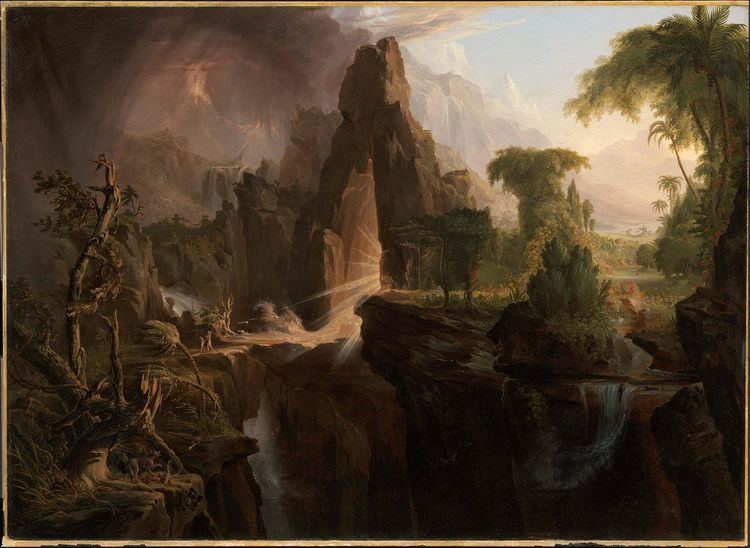
Masaccio provided a large inspiration to the more famous Renaissance painter Michelangelo, due to the fact that Michelangelo's teacher, Domenico Ghirlandaio, looked almost exclusively to him for inspiration for his religious scenes. Ghirlandaio also imitated various designs done by Masaccio. This influence is most visible in Michelangelo's The Fall of Man and the Expulsion from the Garden of Eden on the ceiling of the Sistine Chapel.
Differences from Genesis
The main points in this painting that deviate from the account as it appears in Genesis:
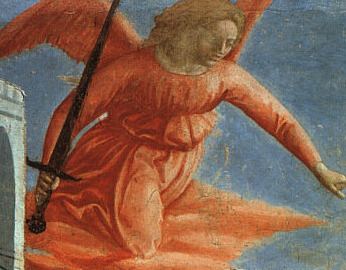
- Adam and Eve are shown in the nude. Although this increases the drama of the scene, it differs from Genesis 3:21 (KJV) which states, "Unto Adam also and to his wife did the LORD God make coats of skins, and clothed them."
- Only one Cherub angel is present. Genesis 3:24 states, "So he drove out the man; and he placed at the east of the garden of Eden Cherubims, [...]" (-im being the original Hebrew plural ending of Cherub, doubled with an English plural in this version).
- The arch depicted at the garden entrance does not appear in the Biblical account.

However, since artists often followed the studio tradition, painting from previous versions of a scene--and so learning from and absorbing other artists' expressive inventions into their own work--any responsible iconographic study would founder in the shallows of literal expectation if the painting were only judged by its adherence to these details and therefore seen to be successful only if it functioned as a simple illustration for the scene.
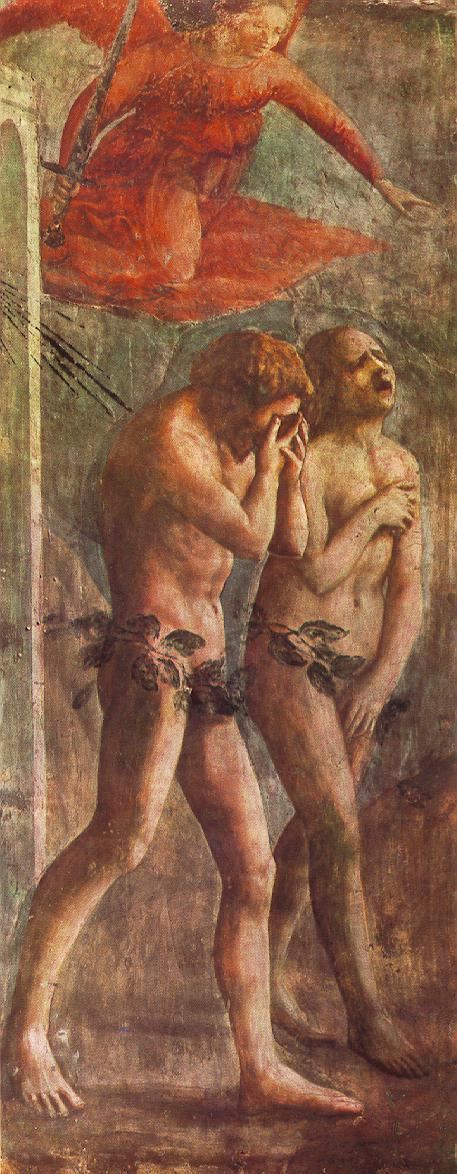
Masaccio's evocation of Eve's howling, deeply felt pain in particular explores the meaning of the expulsion on a previously unexamined, more personal level. (Hartt)

